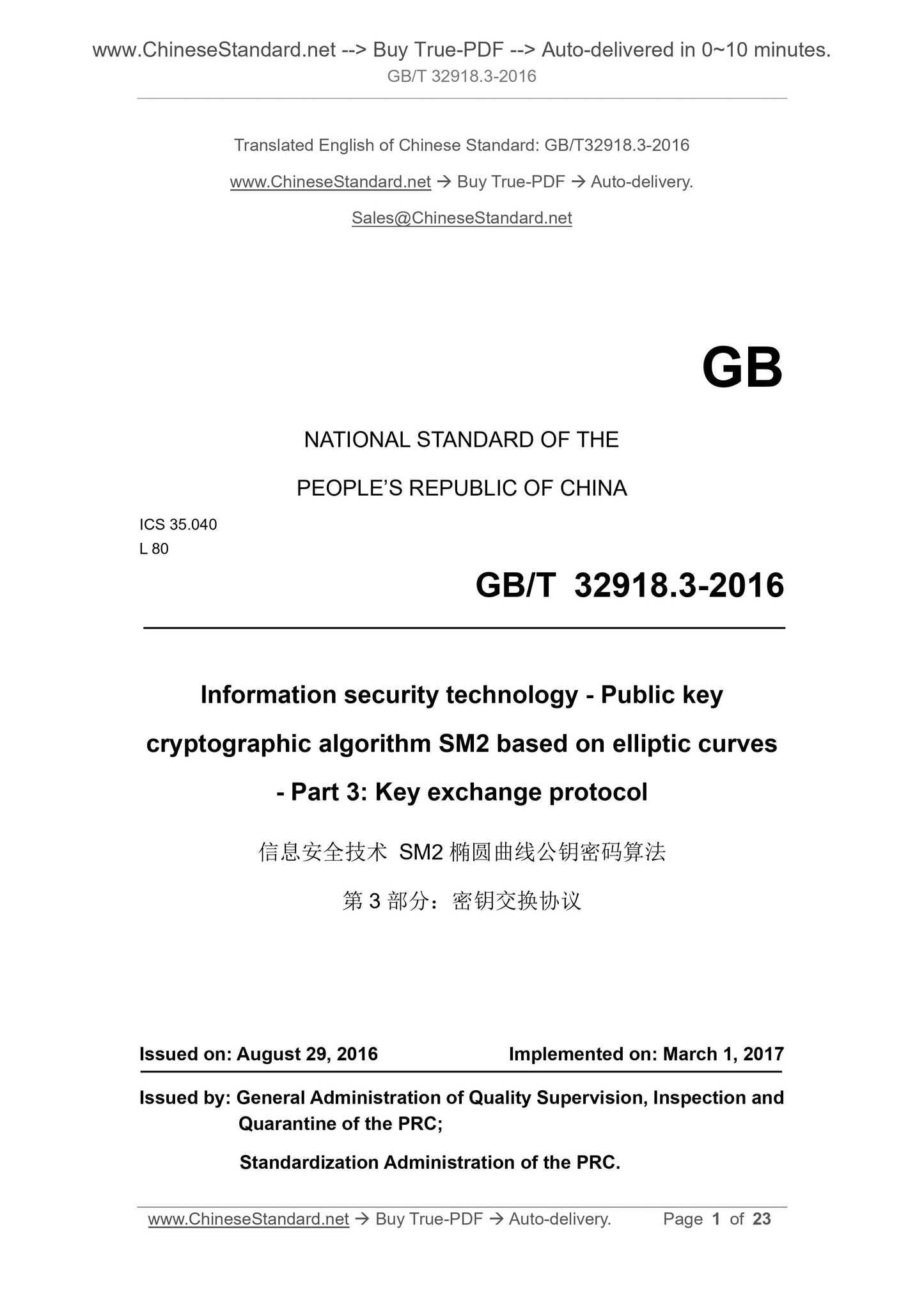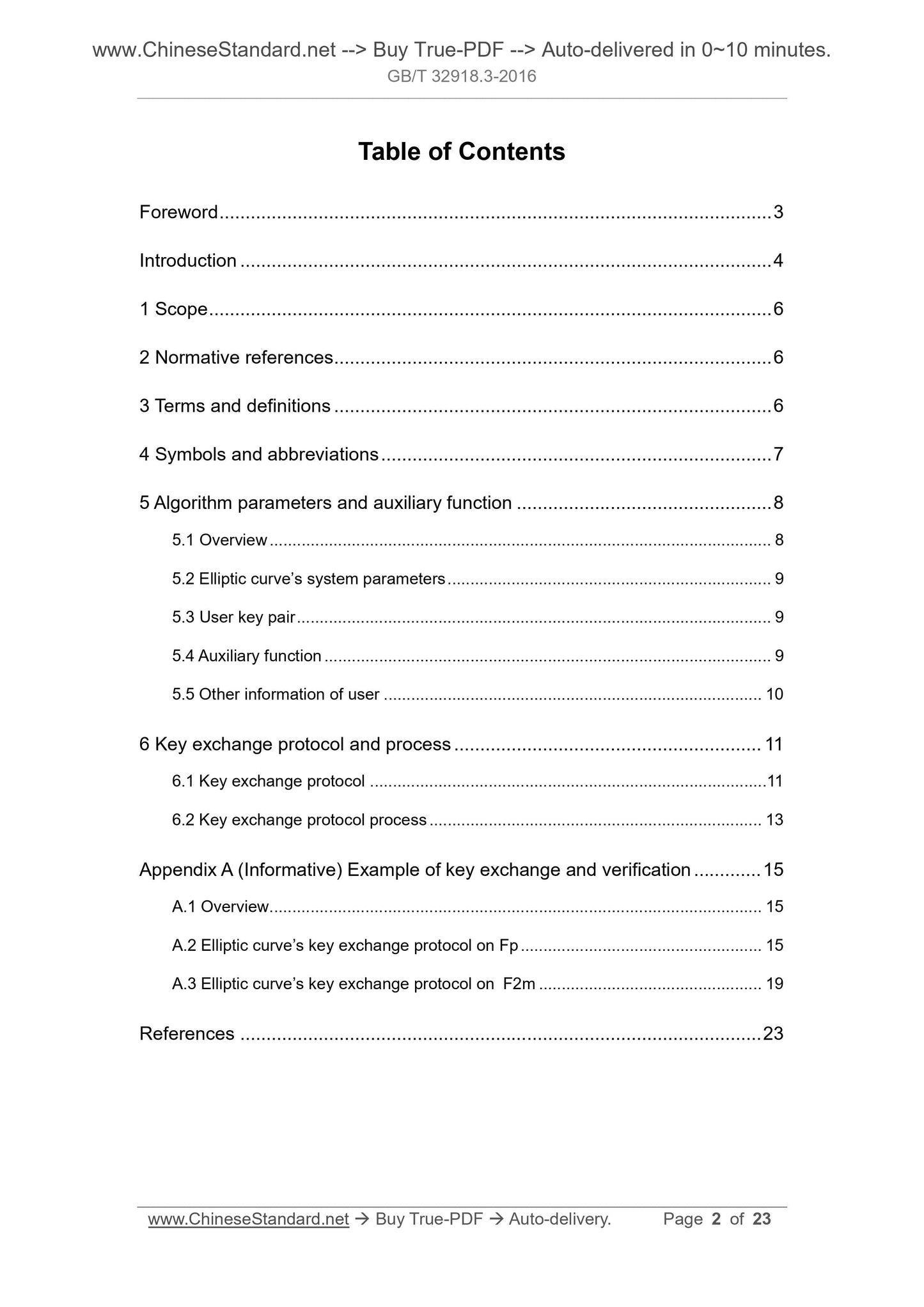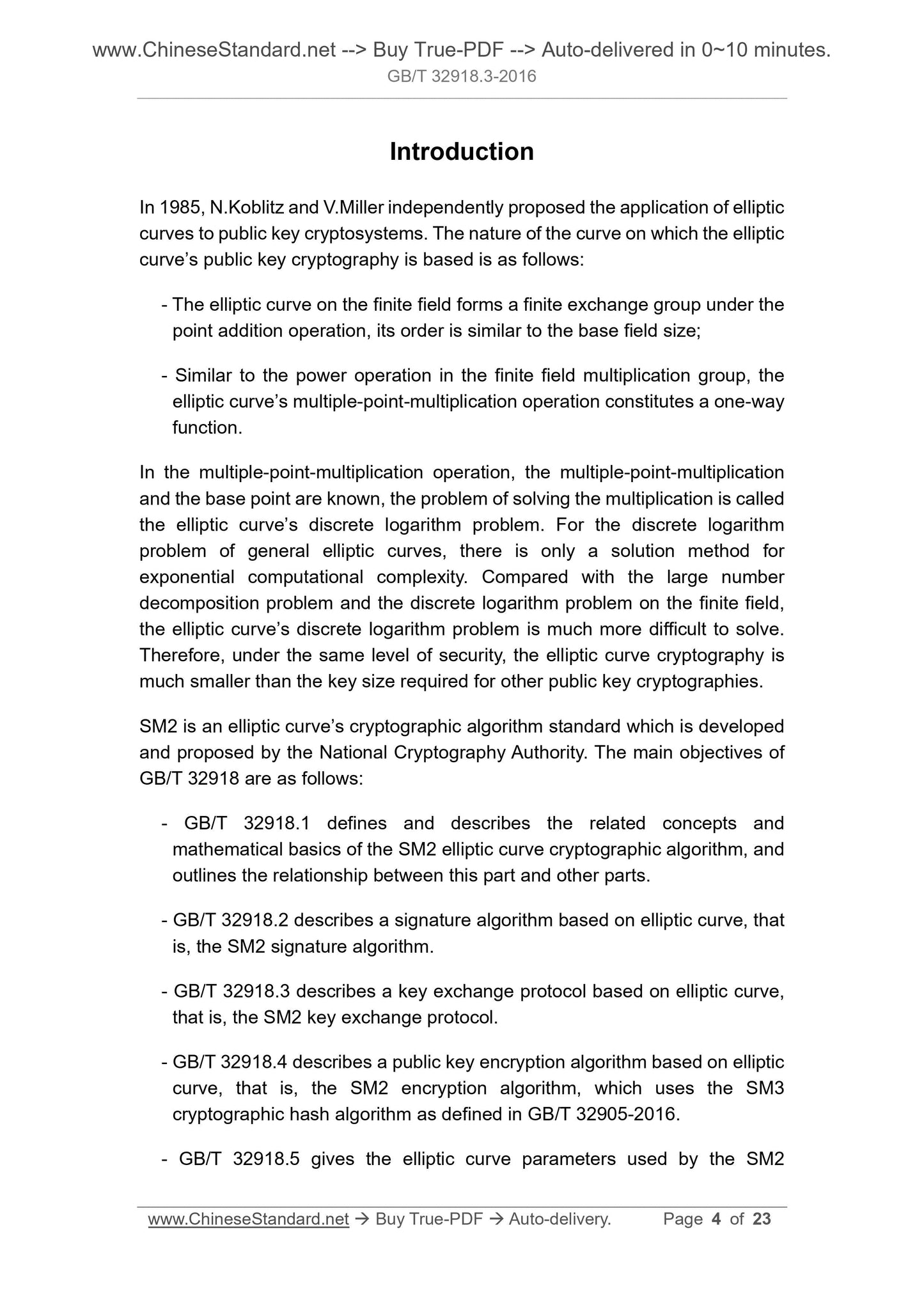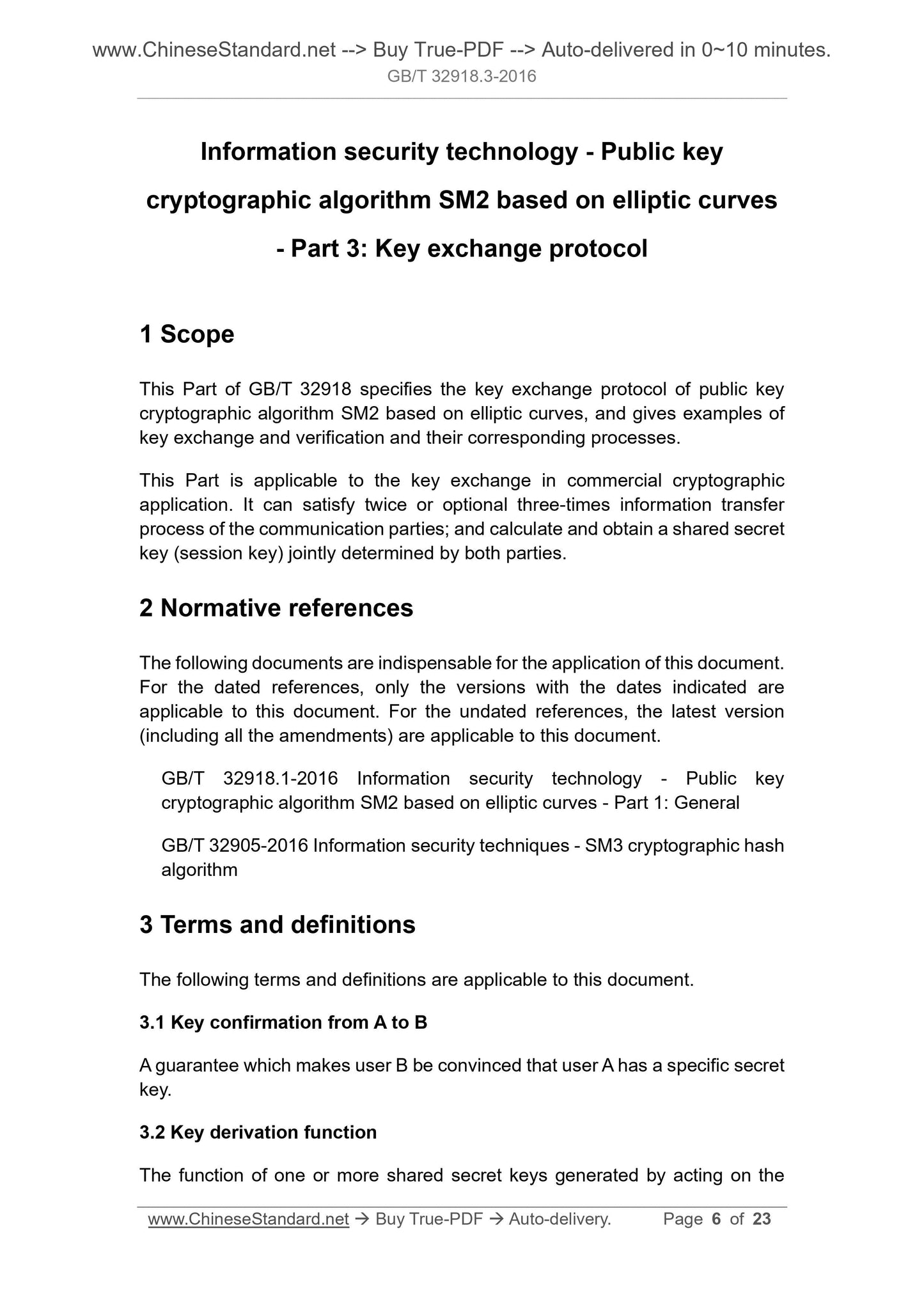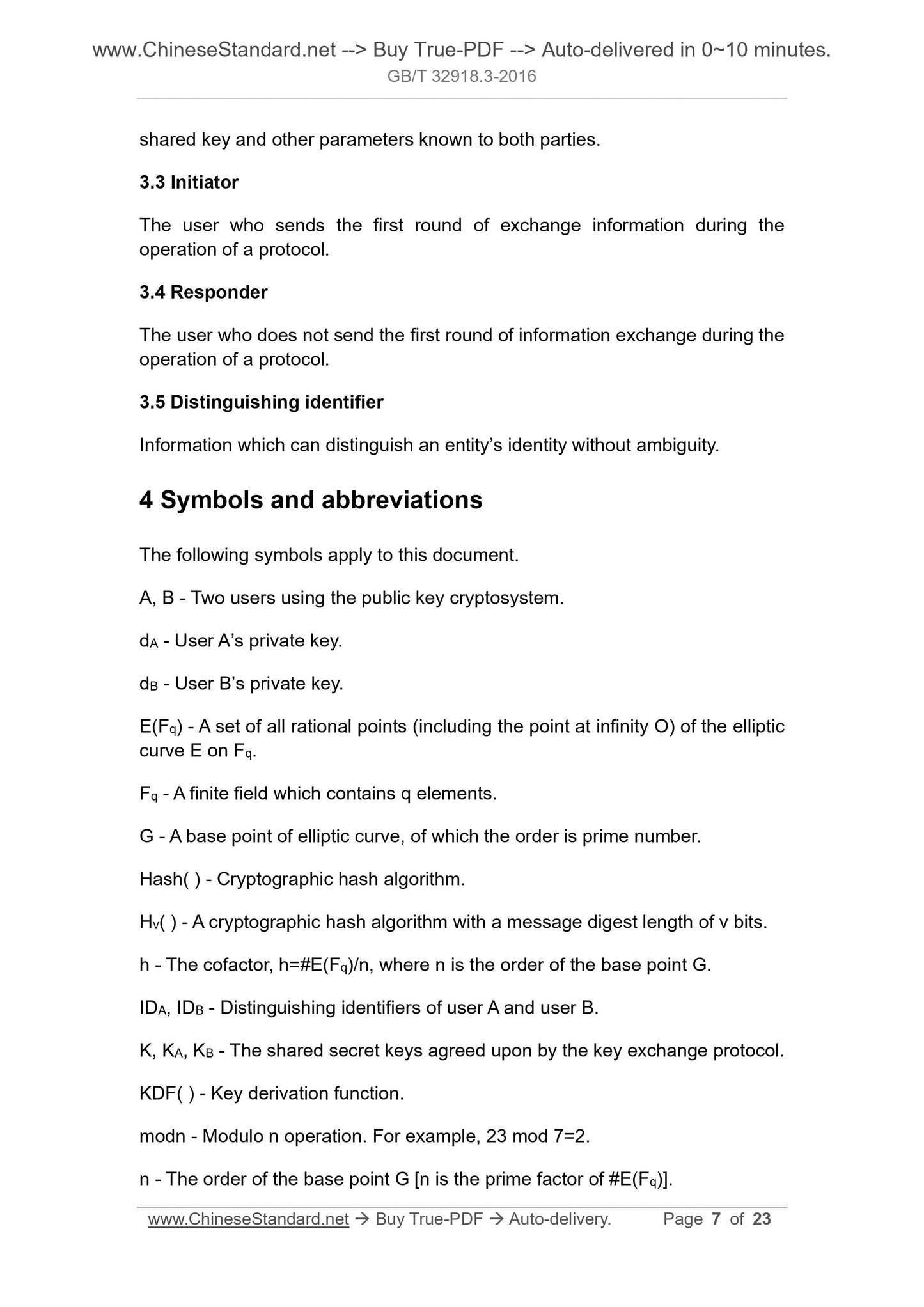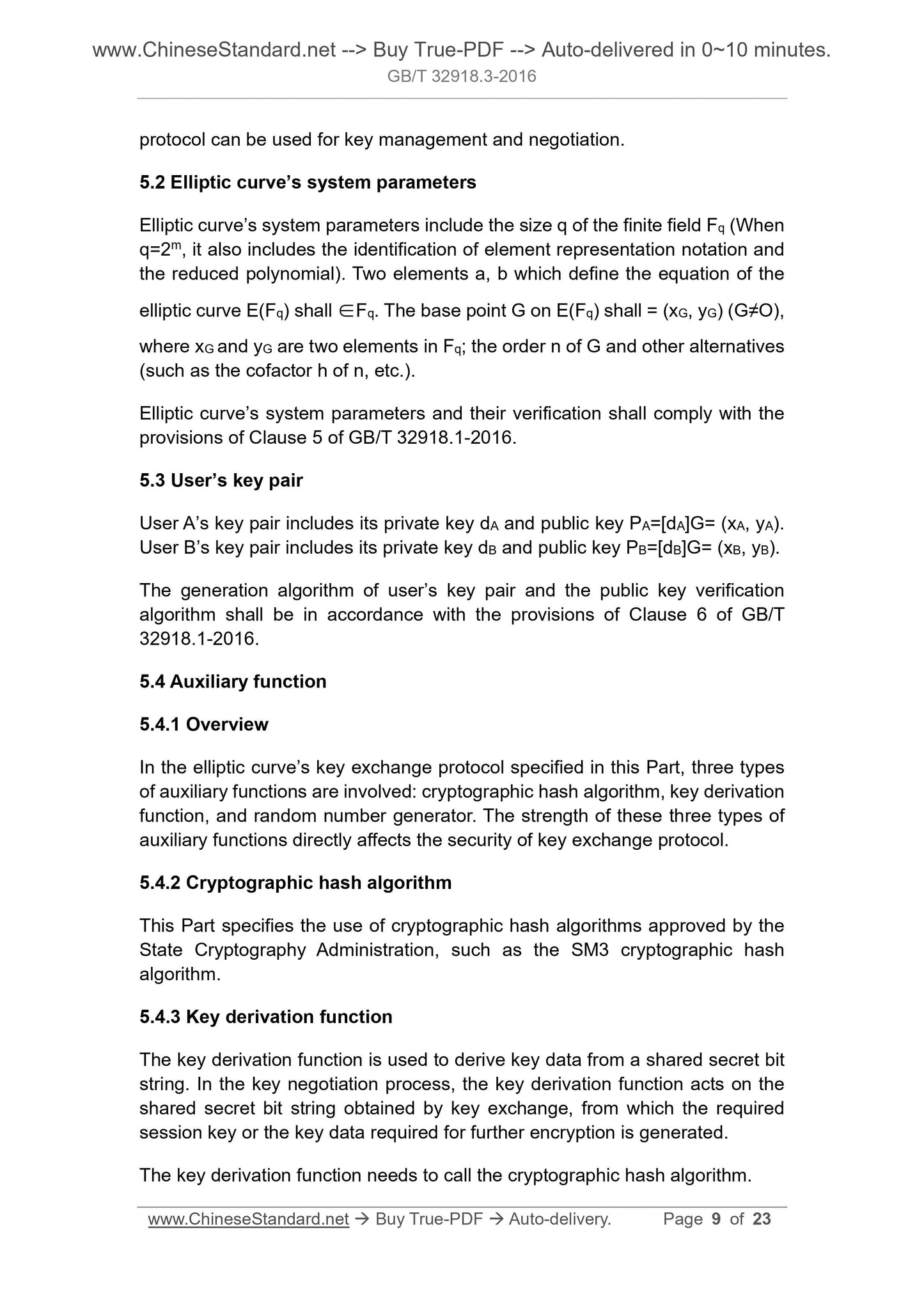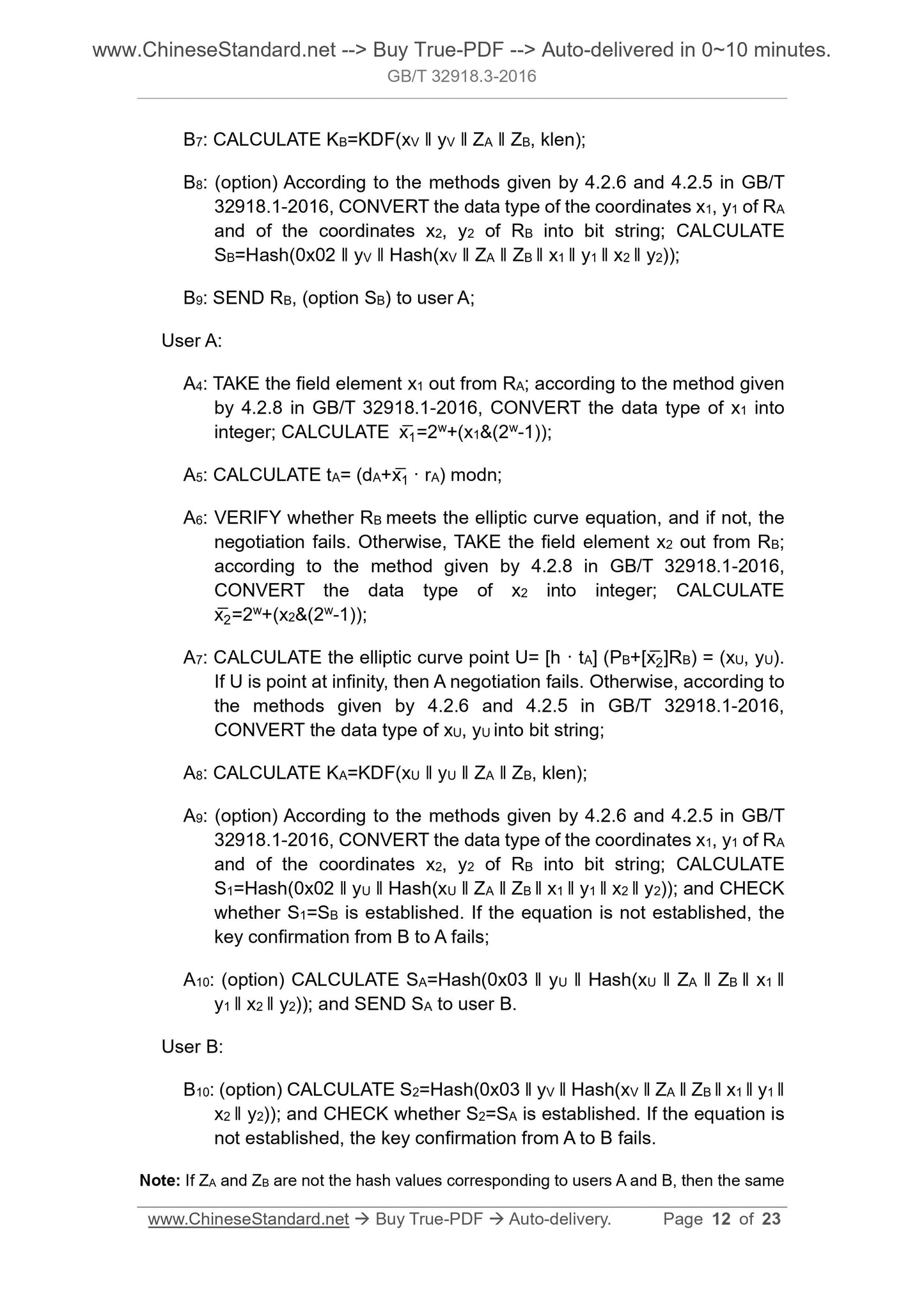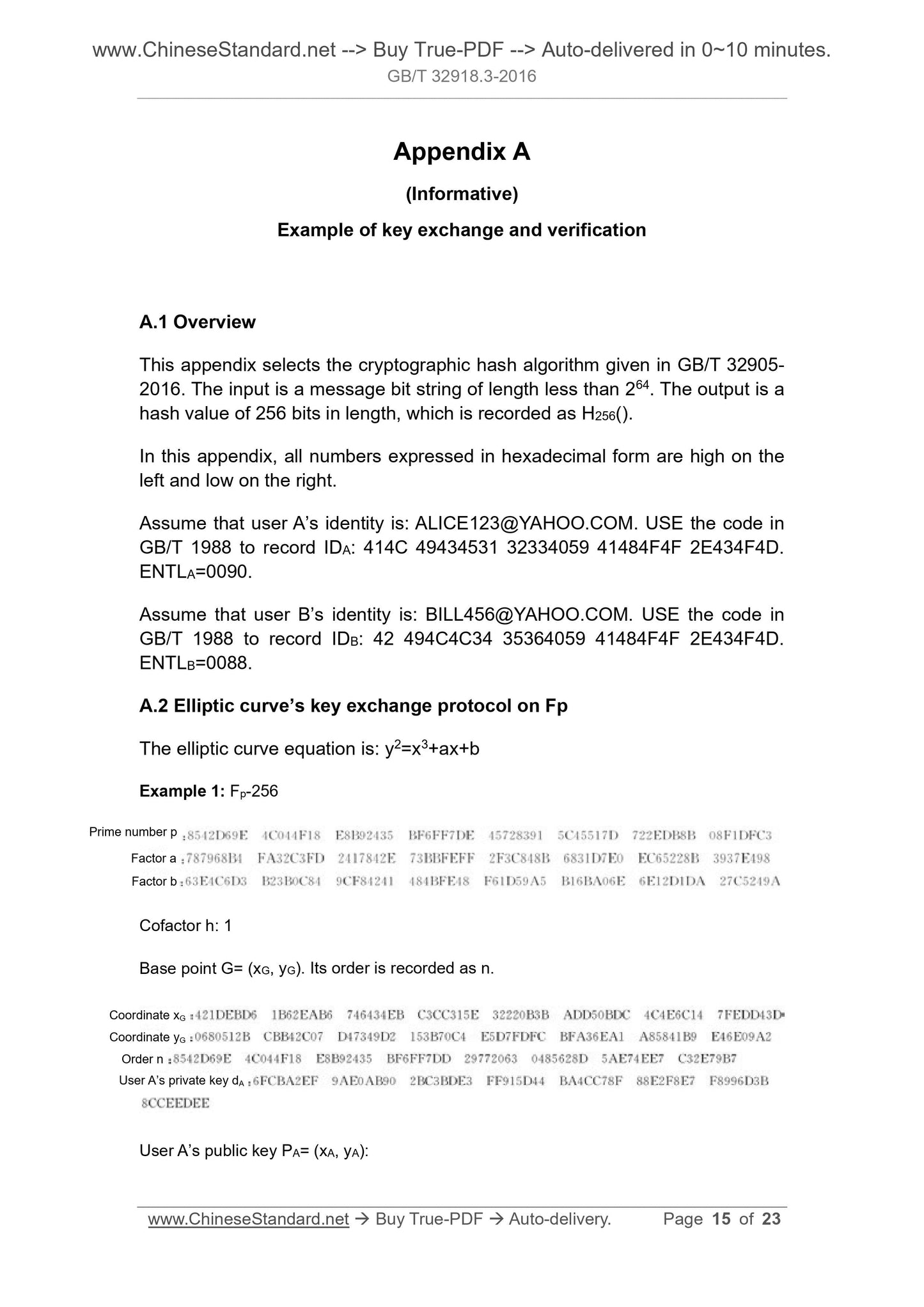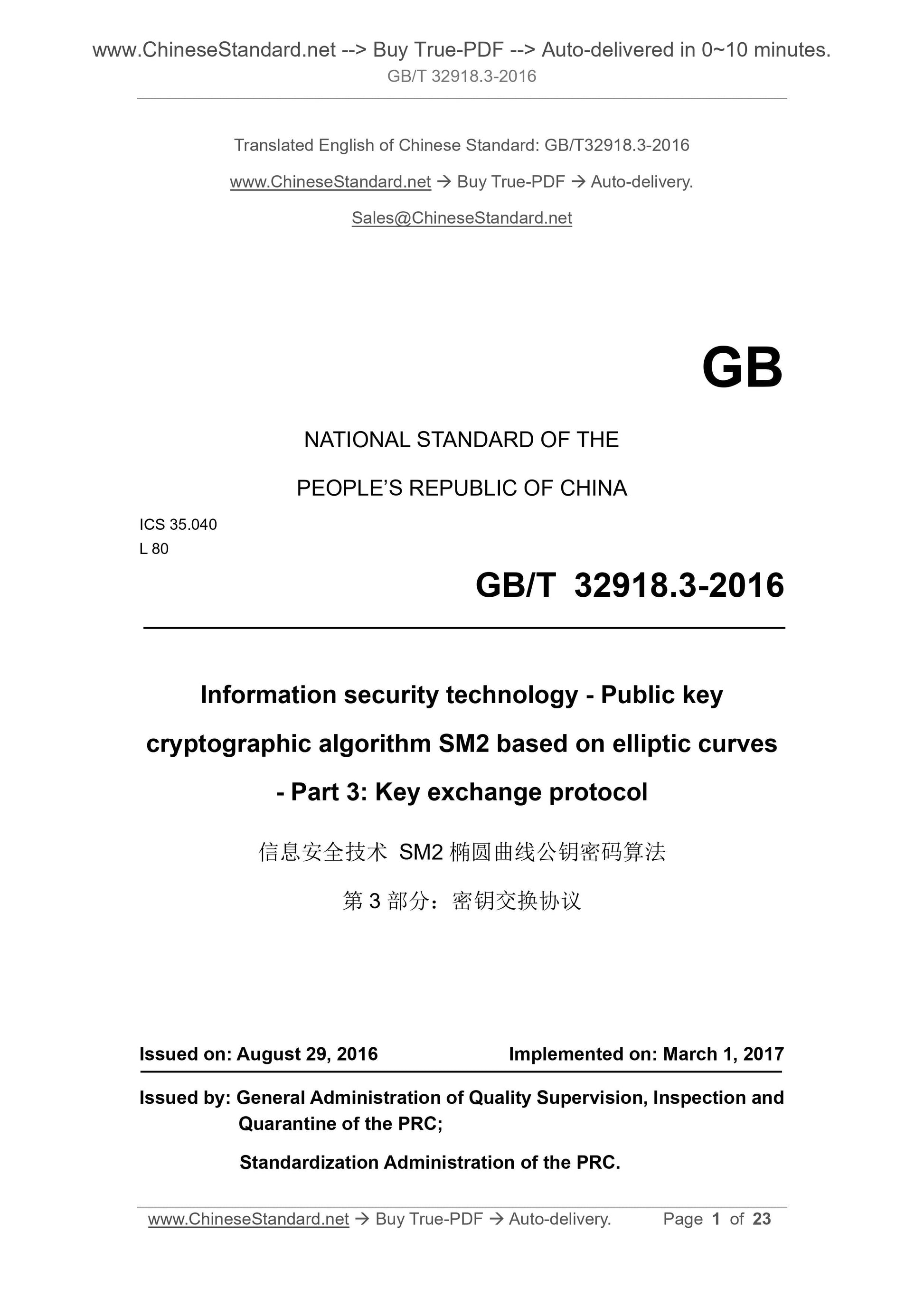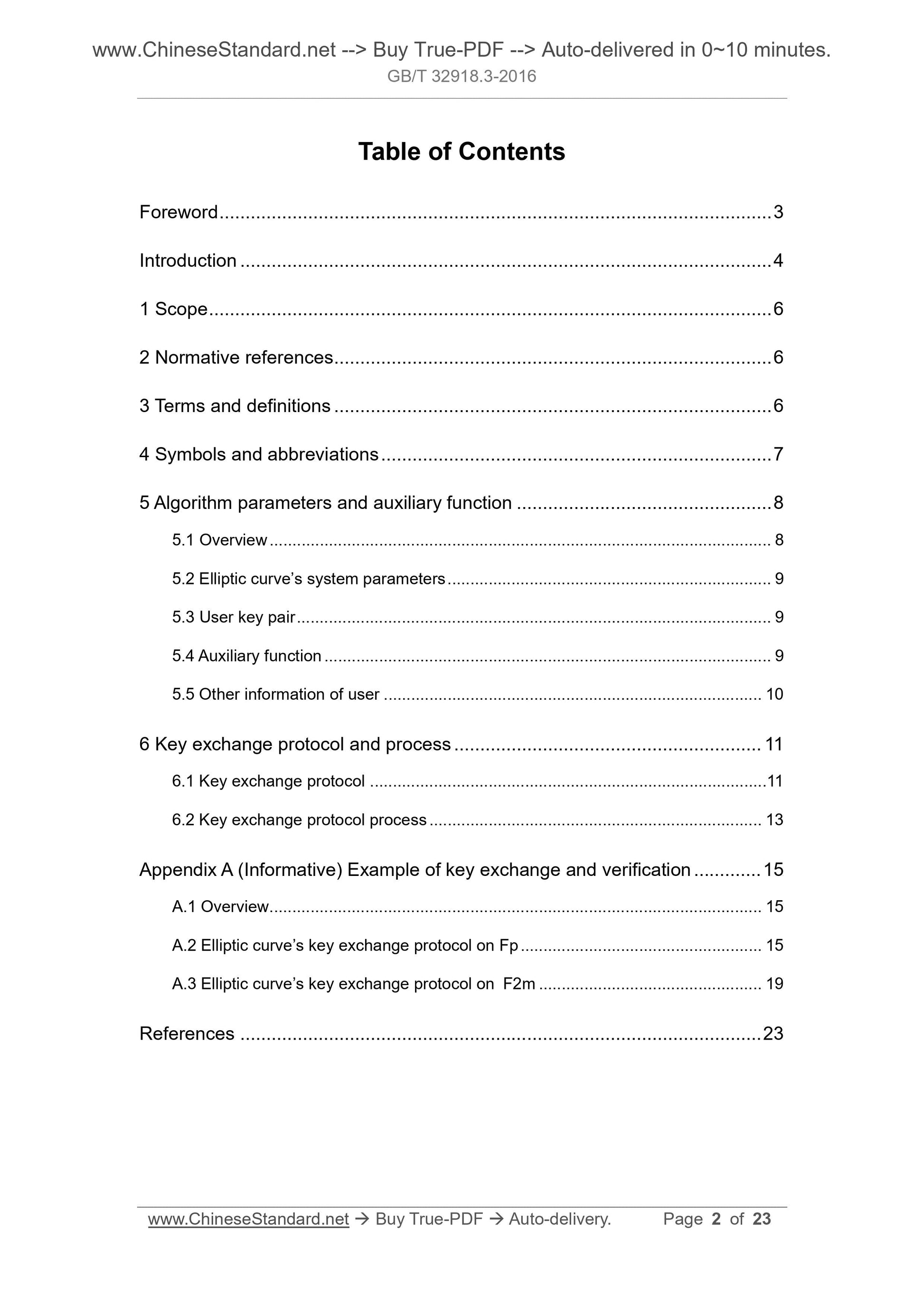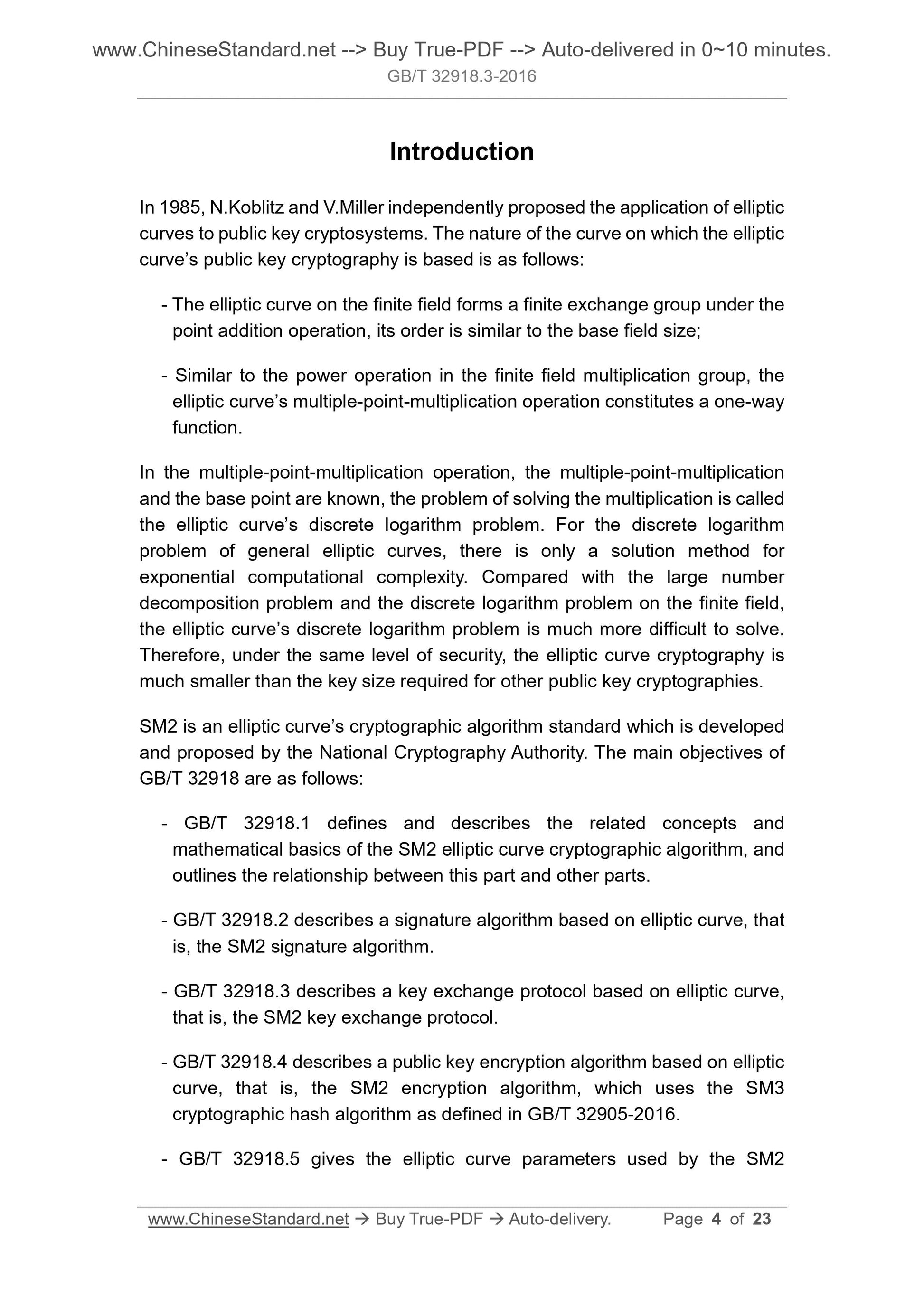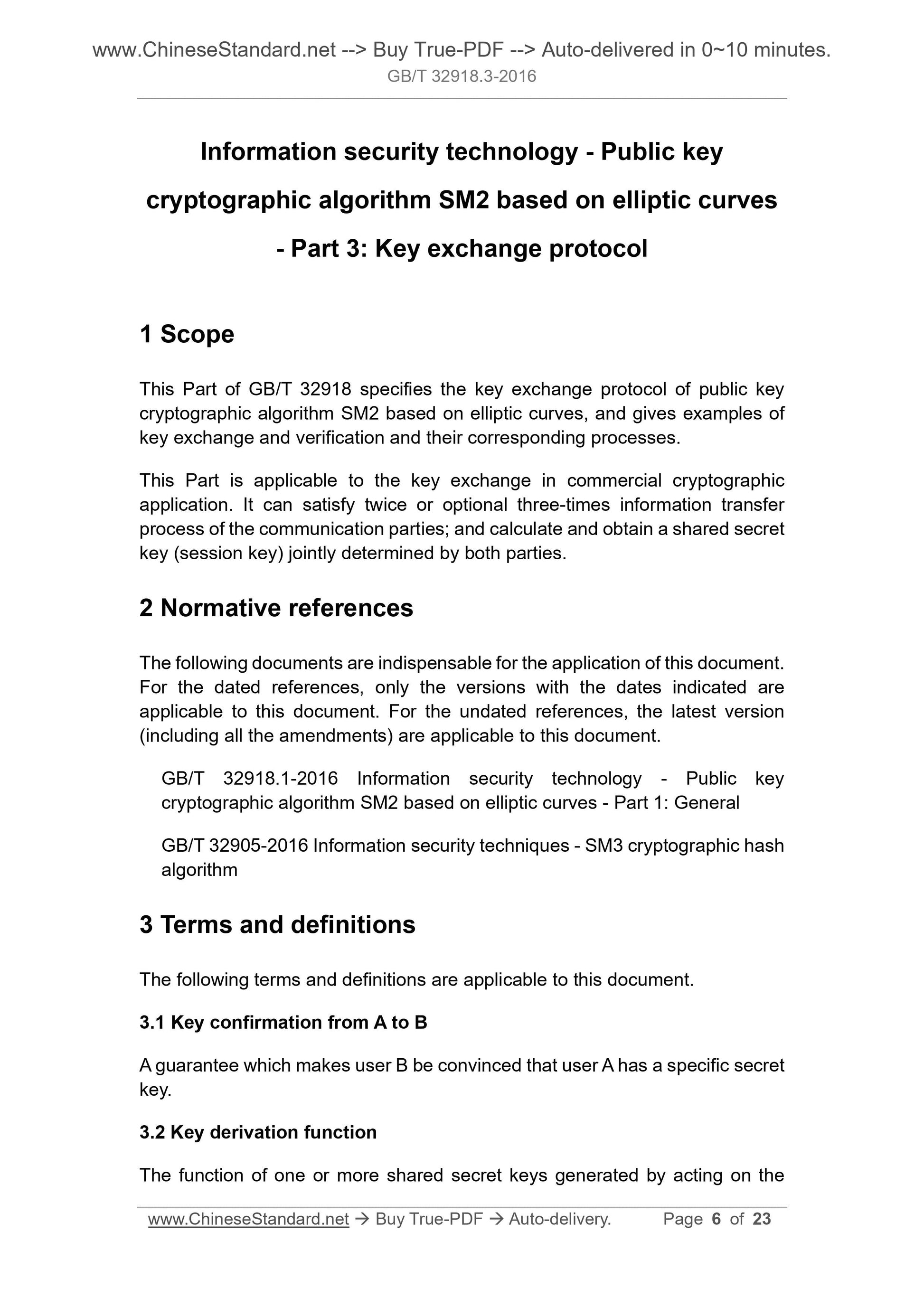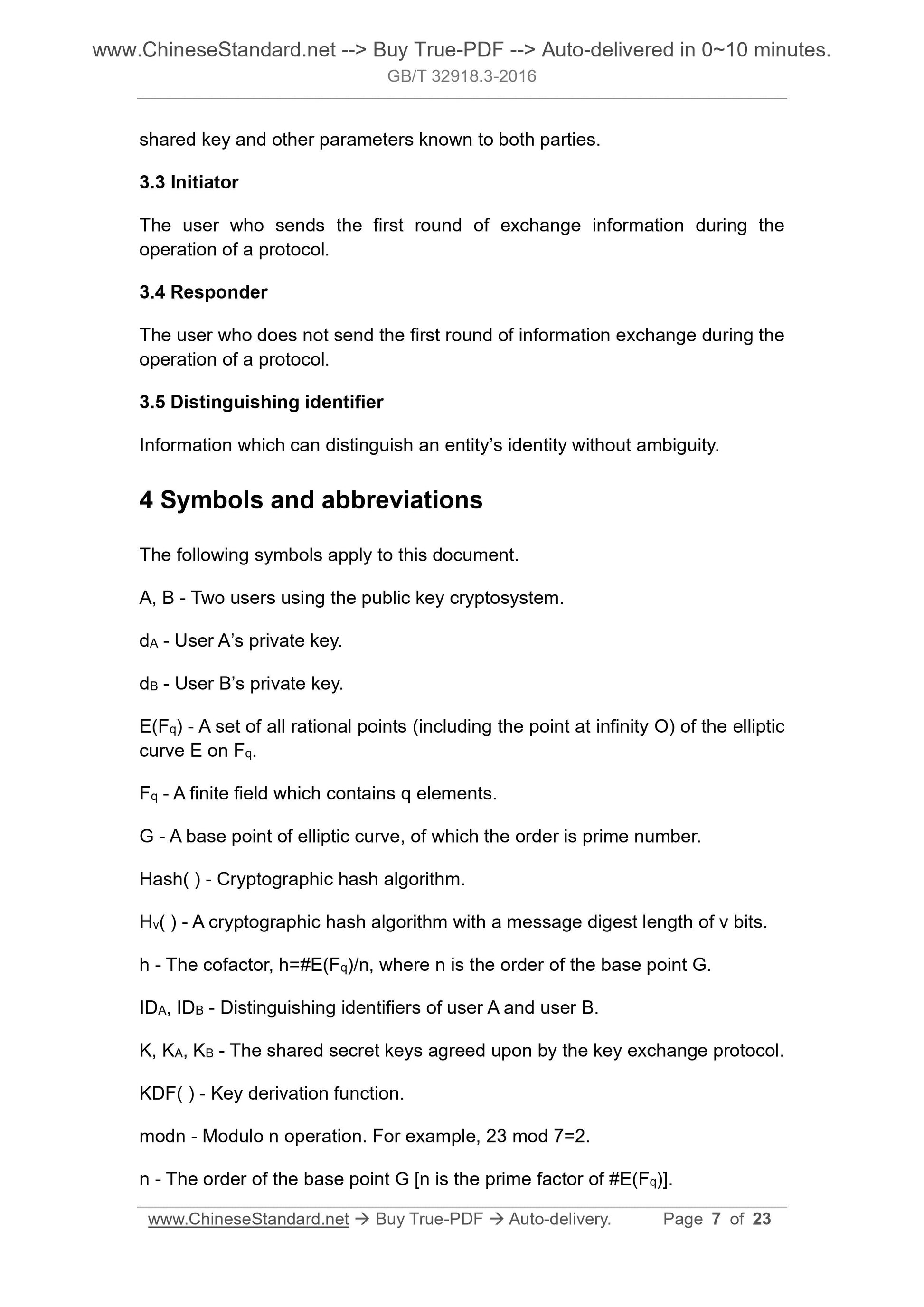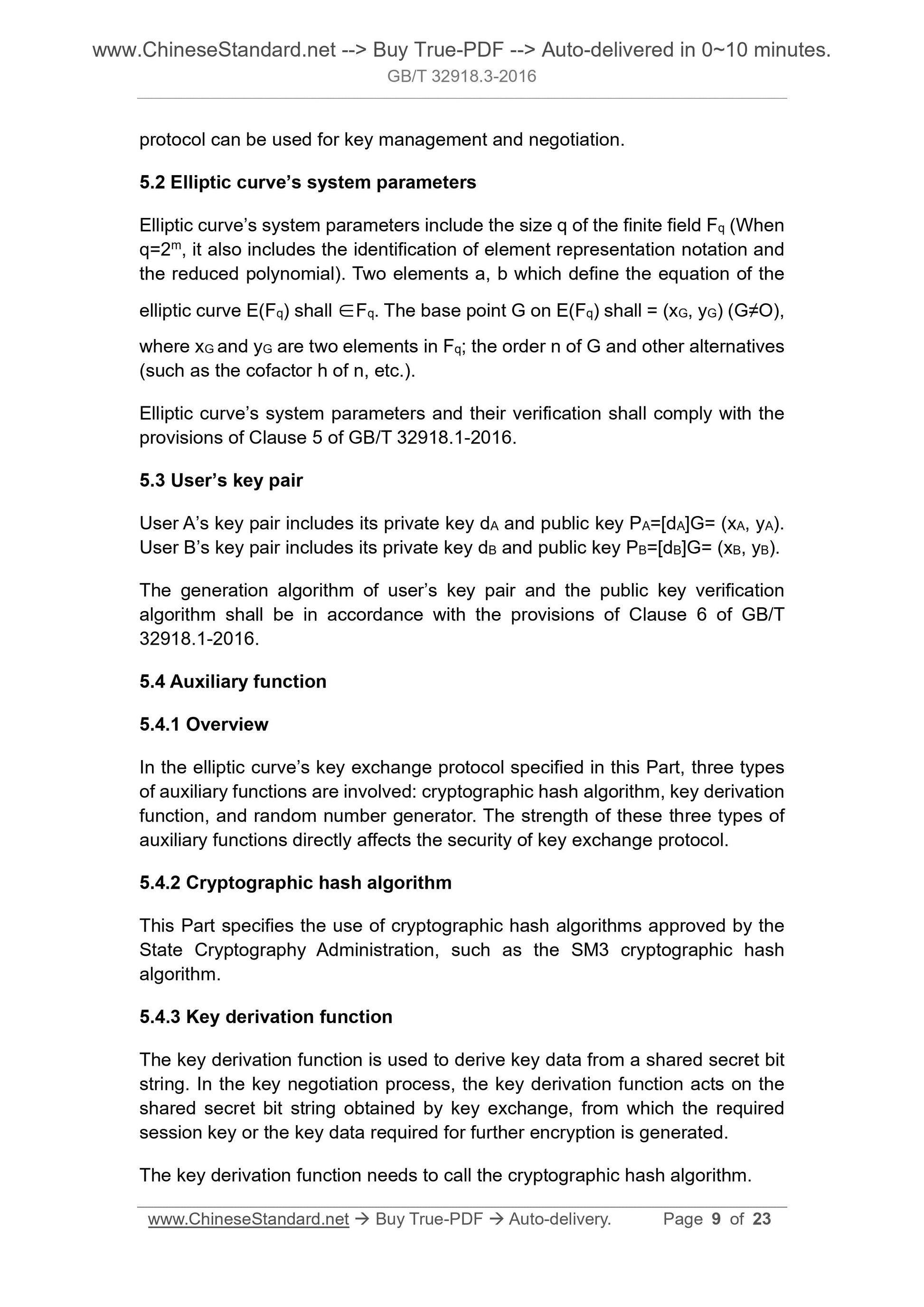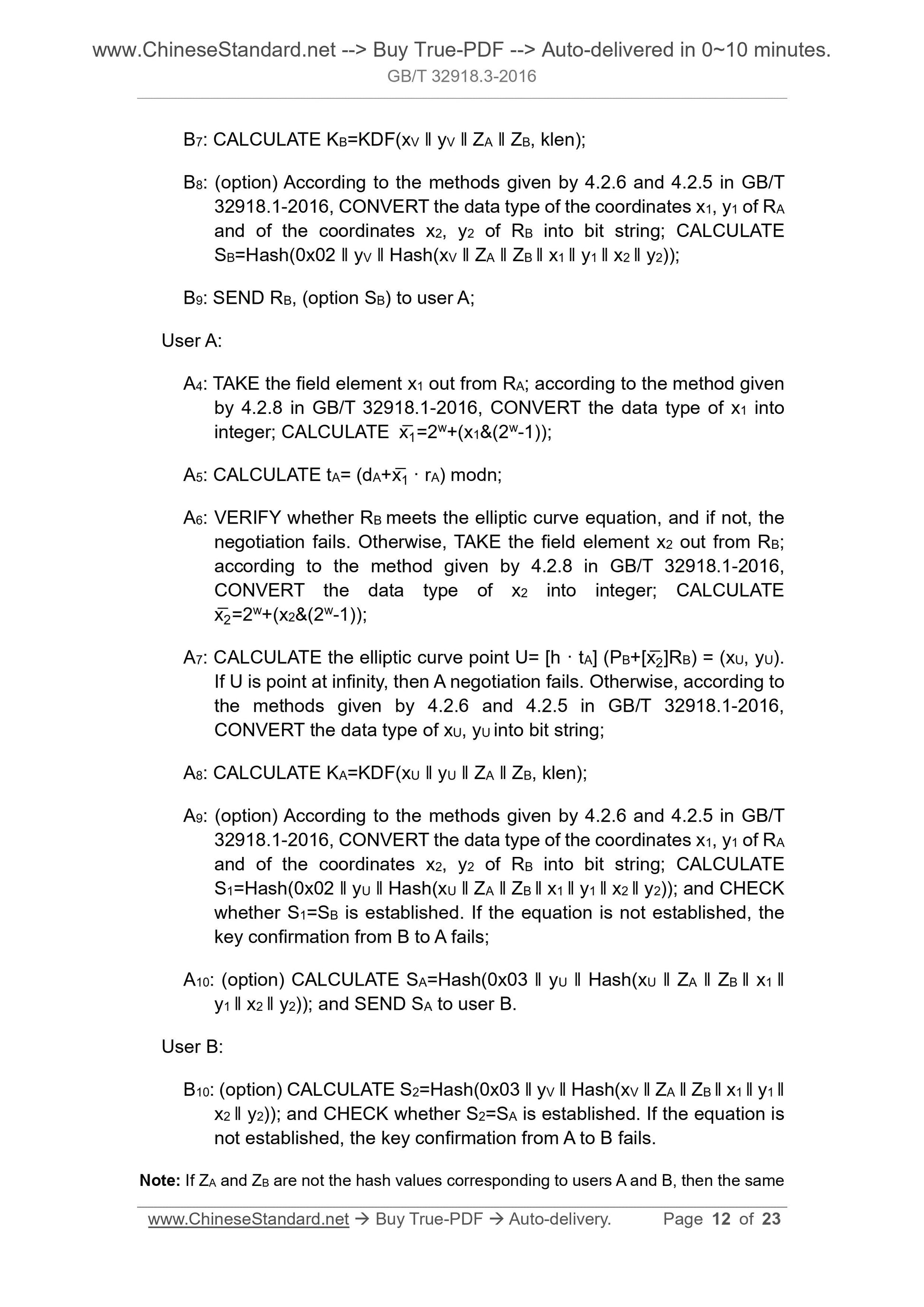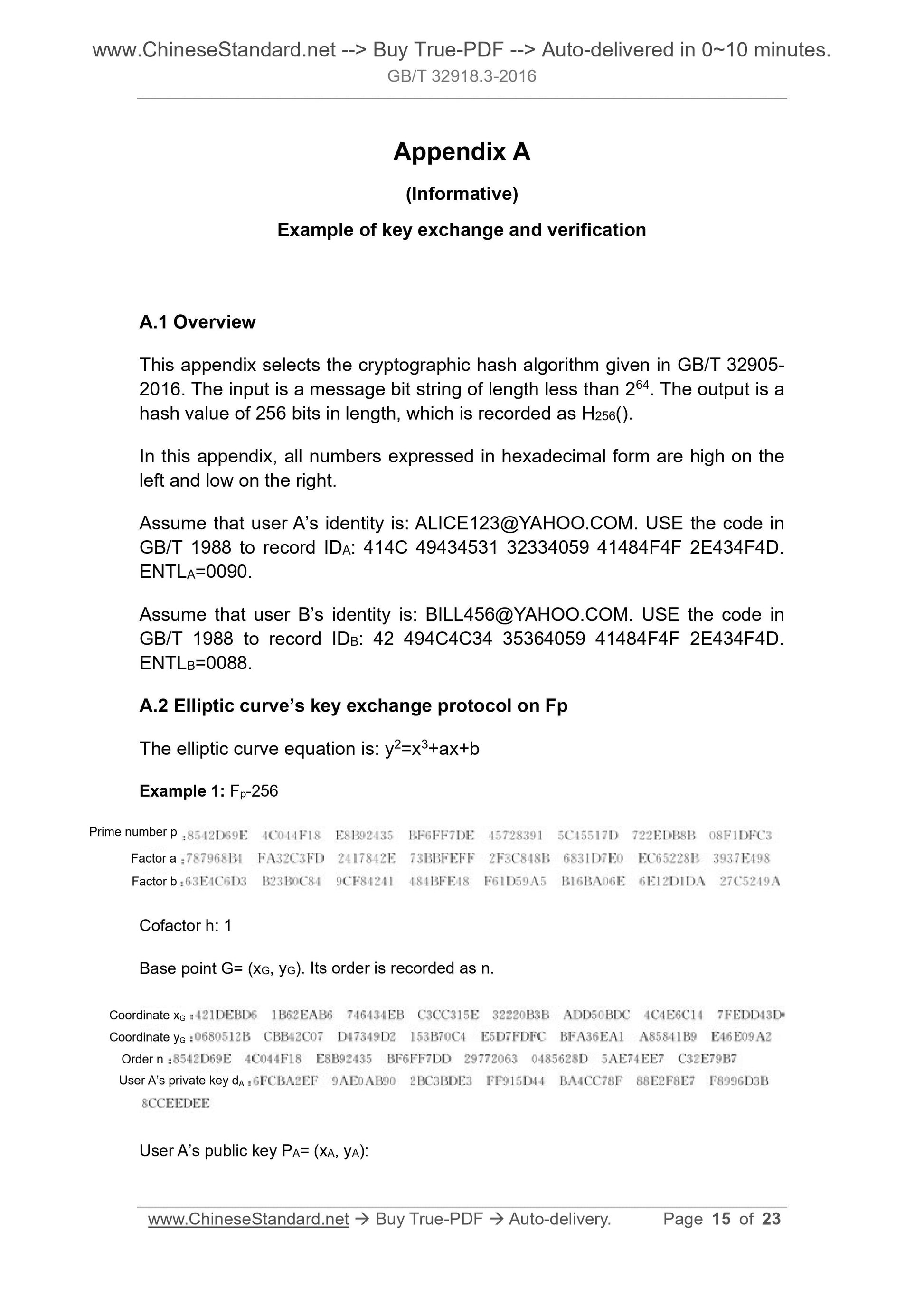1
/
of
8
www.ChineseStandard.us -- Field Test Asia Pte. Ltd.
GB/T 32918.3-2016 English PDF (GB/T32918.3-2016)
GB/T 32918.3-2016 English PDF (GB/T32918.3-2016)
Regular price
$145.00
Regular price
Sale price
$145.00
Unit price
/
per
Shipping calculated at checkout.
Couldn't load pickup availability
GB/T 32918.3-2016: Information security technology - Public key cryptographic algorithm SM2 based on elliptic curves - Part 3: Key exchange protocol
Delivery: 9 seconds. Download (and Email) true-PDF + Invoice.Get Quotation: Click GB/T 32918.3-2016 (Self-service in 1-minute)
Newer / historical versions: GB/T 32918.3-2016
Preview True-PDF
Scope
This Part of GB/T 32918 specifies the key exchange protocol of public keycryptographic algorithm SM2 based on elliptic curves, and gives examples of
key exchange and verification and their corresponding processes.
This Part is applicable to the key exchange in commercial cryptographic
application. It can satisfy twice or optional three-times information transfer
process of the communication parties; and calculate and obtain a shared secret
key (session key) jointly determined by both parties.
Basic Data
| Standard ID | GB/T 32918.3-2016 (GB/T32918.3-2016) |
| Description (Translated English) | Information security technology - Public key cryptographic algorithm SM2 based on elliptic curves - Part 3: Key exchange protocol |
| Sector / Industry | National Standard (Recommended) |
| Classification of Chinese Standard | L80 |
| Word Count Estimation | 17,178 |
| Date of Issue | 2016-08-29 |
| Date of Implementation | 2017-03-01 |
| Regulation (derived from) | National Standard Announcement 2016 No.14 |
| Issuing agency(ies) | General Administration of Quality Supervision, Inspection and Quarantine of the People's Republic of China, Standardization Administration of the People's Republic of China |
Share
